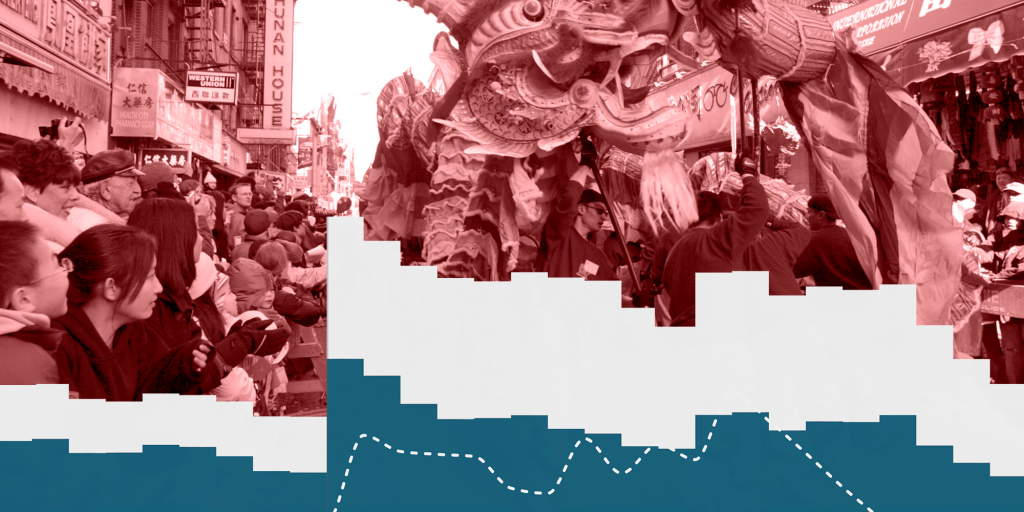Radish to romanesco: A year in vegetables
February 20th, 2025
4 min
Datawrapper lets you show your data as beautiful charts, maps or tables with a few clicks. Find out more about all the available visualization types.
Our mission is to help everyone communicate with data - from newsrooms to global enterprises, non-profits or public service.
We want to enable everyone to create beautiful charts, maps, and tables. New to data visualization? Or do you have specific questions about us? You'll find all the answers here.
Data vis best practices, news, and examples
250+ articles that explain how to use Datawrapper
Answers to common questions
An exchange place for Datawrapper visualizations
Attend and watch how to use Datawrapper best
Learn about available positions on our team
Our latest small and big improvements
Build your integration with Datawrapper's API
Get in touch with us – we're happy to help
This article is brought to you by Datawrapper, a data visualization tool for creating charts, maps, and tables. Learn more.
The big apple, far from its tree

Hi, this is Rose. I’m a writer at Datawrapper. And right now I’m doing that job from New York City—which has prompted a few questions…
When I introduced myself to colleagues a couple weeks ago, there was one question that seemed to be on a lot of people’s minds: Why would I want to move from New York to Berlin? Yes, it’s far away from friends and family, and yes, I will need a different plug for my phone charger. But I’m not even the first person at Datawrapper to move to Germany from abroad, let alone the first person in the world. I think their surprise had more to do with New York itself—it just seems like a city that people move to.
So is that a misconception, or am I really making an unusual choice? And if I’m an atypical New Yorker, what does a typical New Yorker’s migration look like?
In fact, just having been born here makes me an atypical New Yorker. Of the approximately 8.3 million people who live in the city today, just under half were born in New York State. Eleven percent come from other US states and 40% from the rest of the world. So we’re not wrong to associate New York with immigration—the average New Yorker comes from somewhere else.
I got these numbers from the US Census Bureau, who do their best to estimate not just how many people live in each county, but how they got there: by birth, by migrating from another country, or by migrating from elsewhere in the US. When you take away the people who died, moved abroad, or moved domestically, you’re left with each of these three streams’ net effect on the population that year.[1] Those are the numbers that will show us whether it’s unusual to move away:
So, is it normal to leave New York? That depends on where you're going. Domestic migration has been net-negative for decades—however many Americans move here to make it big, they'll always be dwarfed by the number streaming out to greener suburban pastures. But internationally, the opposite is true—the city is a worldwide magnet and relatively few people emigrate away. Strange as it may seem, leaving New York for Berlin, New Hampshire, would put me in the mainstream, but leaving it for Berlin, Germany, doesn't.
So far we've seen that the typical New Yorker is a migrant, not a born-and-bred local, and that the typical international migrant is heading towards New York, not away from it. What does this immigrant city look like?
The size of each circle on this map represents the absolute number of present-day New Yorkers who were born in each country. Some of the big circles shouldn't be that surprising—sure, a lot of people have come here from China. But many of those countries simply have large populations. If you look at the color of the circles, you'll see that Chinese-born people are actually underrepresented in New York City compared to in the world at large.
Maybe more noteworthy are the countries in dark green, which send a disproportionately large number of people to New York. Our neighbors in the Americas unsurprisingly stand out here, as do Eastern and Southern Europe. Topping the charts is tiny Guyana, where 129,492 New Yorkers were born—though the country itself is home to only 782,775! The Dominican Republic, birthplace of New York's largest immigrant community, also comes in strong on this measure.
Looking at the numbers, it seems like my coworkers were right. It was kind of a weird idea to have been born here and maybe it's kind of a weird idea to leave. If you want a more typical New York story, you should probably talk to a Manhattanite in New Jersey or a Jamaican in Brooklyn. But I'm not sorry to be stepping out a little; I prefer to think of it as making room for the next person.
That's all for today! I'd love to hear about your cities and how you came to live in them — write me at rose@datawrapper.de or leave a note in the comments below. Next week we'll hear from David, our head of design. See you then!
Comments